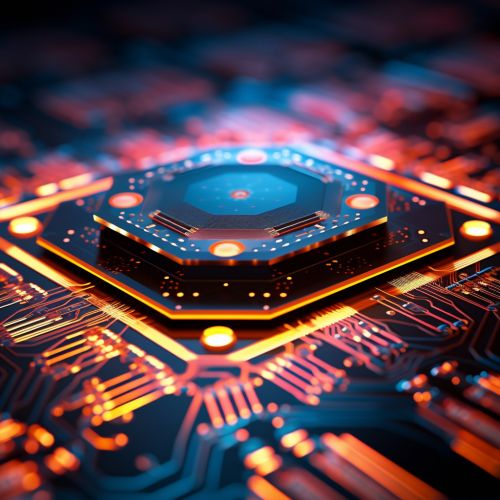Diodes
Introduction
A diode is a two-terminal electronic component that conducts current primarily in one direction (asymmetric conductance); it has low (ideally zero) resistance in one direction, and high (ideally infinite) resistance in the other. A diode vacuum tube or thermionic diode is a vacuum tube with two electrodes, a heated cathode and a plate, in which electrons can flow in only one direction, from cathode to plate.
History
The first types of diodes were vacuum tube devices, also known as thermionic diodes, invented in the early 20th century. The discovery of the semiconductor properties of various materials in the mid-20th century led to the development of the modern diode.
Types of Diodes
There are several types of diodes, each with its own specific function and characteristics. These include:
Semiconductor Diodes
Semiconductor diodes, the most common type of diode, are composed of a piece of semiconductor material with a p–n junction connected to two electrical terminals.
Zener Diodes
Zener diodes are used for voltage regulation, preventing circuits from exceeding a specific voltage.
Light Emitting Diodes
Light Emitting Diodes (LEDs) emit light when an electric current passes through them.
Photodiodes
Photodiodes are designed to be sensitive to light, and are often used in solar panels and light sensors.
Tunnel Diodes
Tunnel diodes have a high forward resistance and are used in high-frequency applications.
Diode Function
A diode’s main function is to allow an electric current to pass in one direction (called the diode’s forward direction), while blocking it in the opposite direction (the reverse direction).
Diode Symbol and Polarity
The symbol of a diode is an arrow with a line at its head. The arrow represents the direction in which current is allowed to flow.
Diode Characteristics
Diodes have two characteristics that define their operation: Forward voltage drop and Reverse recovery time.
Diode Applications
Diodes are used in a wide variety of applications, including:
- Power conversion
- Over-voltage protection
- Logic gates
- Radio demodulation
- Ionizing radiation detectors
Diode Testing
Testing a diode involves measuring the forward voltage drop and checking for a reverse leakage current.
See Also


